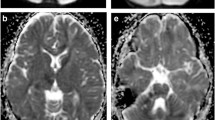Abstract
A 27-year-old female patient suffered from recurrent episodes of dizziness, visual rotation, and intermittent right-hand numbness over one month. Symptoms persisted and were triggered by rotating the head to the right or left for more than 10 seconds. Neurological examination showed that the symptoms were most pronounced when the head was rotated over 45 degrees to the right. Dynamic digital subtraction angiography (dDSA) was performed to confirm the diagnosis. Leftward head rotation caused occlusion of the right vertebral artery(VA) . However, the symptoms were mild, owing to sufficient compensation by the right posterior communicating artery (PCA) . Rightward head rotation exceeding 45 degrees resulted in occlusion of the left VA. The resultant symptoms were pronounced due to inadequate compensation of the left PCA. CT angiographic reconstruction showed bilateral vertebral arteries with tortuous loops of vessels at the level of the C2 vertebrae . CT images showed no cleavage between the left VA and the anterior surface of the left C2 transverse foramen. Conservative treatment was recommended considering the patient's young age and limited severity of her symptoms. Bow Hunter's syndrome is a rare neurovascular disorder characterized by dynamic occlusion of the VAs during head rotation, leading to inadequate blood flow to the posterior cerebral circulation. Bow hunter syndrome, where bilateral dynamic occlusion occurs without a discernible dominant side of the VA, is uncommon. The medical community must acknowledge cervical vertigo as a distinct disorder. dDSA remains the gold standard for its diagnosis.

Similar content being viewed by others
Data availability
All data generated or analysed during this study are included in this published article.
Reference
Sorensen BF (1978) Bow Hunter’s stroke. Neurosurgery 2(3):259–261
Author information
Authors and Affiliations
Corresponding author
Ethics declarations
Ethical approval and Informed consent
Informed consent for publication was obtained from the patient.
Conflict of interest
The authors declare no competing interests.
Additional information
Publisher’s Note
Springer Nature remains neutral with regard to jurisdictional claims in published maps and institutional affiliations.
Rights and permissions
Springer Nature or its licensor (e.g. a society or other partner) holds exclusive rights to this article under a publishing agreement with the author(s) or other rightsholder(s); author self-archiving of the accepted manuscript version of this article is solely governed by the terms of such publishing agreement and applicable law.
About this article
Cite this article
Wang, ., Zheng, H. & Hu, F. Bilateral Hunter’s bow syndrome: a rare case diagnosed by dynamic digital subtraction angiography. Neurol Sci 45, 365–367 (2024). https://doi.org/10.1007/s10072-023-07098-9
Received:
Accepted:
Published:
Issue Date:
DOI: https://doi.org/10.1007/s10072-023-07098-9




